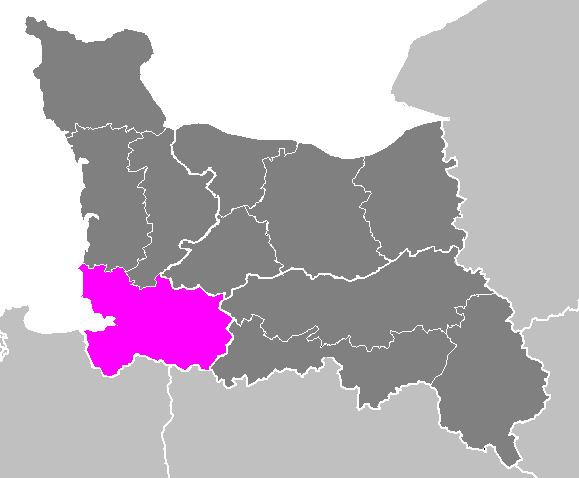Date 6 March 1426 Location Avranches, France | Result English victory | |
 | ||
Similar Hundred Years' War, Battle of Beaugency, Battle of Meung‑sur‑Loire, Battle of Cravant, Siege of Meaux | ||
The Battle of St. James was fought on 6 March 1426 between England and France, during the latter half of the Hundred Years' War.
Contents
Forces
The battle was fought at Avranches, on the border of Normandy and Brittany, with the English led by John, Duke of Bedford, while the French were led by Arthur de Richemont, Constable of France. The English were victorious.
Background
Jean, Duke of Brittany, had turned coat and switched his allegiance to Charles the dauphin. In January 1426 Sir Thomas Rempston invaded the duchy in retaliation, and with his miniature army reached the capital, Rennes, before falling back. He then encamped in St. James-de-Beuvron, on the Norman border. Arthur de Richemont, newly made constable of France (and the duke's brother), raised an army and, in February, rushed to Jean's rescue, laying siege to St. James. Rempston was heavily outnumbered, only 600 strong, against Richemont's vast horde of 16,000.
Battle
The constable had with him a powerful force of artillery; the bombardment soon yielded results. Two large breaches were made in the walls. On the 6th of March the French attacked in force. All day Rempston's troops held the breaches, but there was no let-up in the constable's assault. Finally, at the end of their tether, the embattled garrison resolved to decide the issue with a last-ditch action. Leaving a force to hold the enemy, the rest under Rempston crawled through a sally port to take the enemy in the rear. Raising a cry of "St. George and Salisbury," they sallied forth to the fight. The French, furiously assailed from both sides and believing that the feared Earl of Salisbury had fallen on them unawares, broke and quit the field with astounding alacrity, in their confusion heedless of their overwhelming superiority in numbers. The remnants of this disorganized feudal horde, routed by an enemy twenty-six times inferior, straggled back into camp, thoroughly demoralized. Any attempts Richemont may have made to rally them were unsuccessful and, in the night, they burned their tents and baggage and fell back in disorder to their point of departure near Fougres. Six hundred were dead, 50 captured, and 18 standards lost. The remainder soon disbanded.
Aftermath
Two days later the Earl of Suffolk arrived, bringing 1500 men. Intent on exploiting the victory, he at once set out for Rennes, 45 miles to the west. Halfway there, he captured the town of Dol without difficulty, as neither Jean nor Richemont offered resistance. Here he found he need not resume the advance, for the duke had offered a three-month truce. Suffolk agreed. After a brief outbreak of fighting next year the turncoat duke sought rapprochement with his erstwhile allies, and signed a treaty with the Duke of Bedford by which he accepted Henry VI as king of France.
